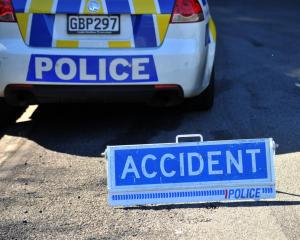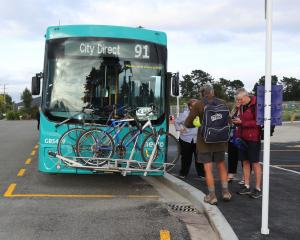There are 904 new cases of Covid-19 in Canterbury today and one death has been reported in South Canterbury.
The Ministry of Health reported 6133 new community cases across New Zealand on Tuesday, including 92 in South Canterbury.
There are also 377 people currently in hospital, and another 23 deaths have been reported, the ministry said.
Of the 23 deaths, one person was from Northland, five were from the Auckland region, three from Waikato, one from the Lakes DHB region, four from Taranaki, two from MidCentral, one from Hawke’s Bay, two from the Wellington region, one from South Canterbury, and three from Southern. One was in their 50s, three were in their 70s, 11 were in their 80s, and eight were aged over 90. Fifteen were women and eight were men.
Of the 377 people in hospital, seven are in ICU or HDU, 49 are in Canterbury DHB hospitals and two cases are in South Canterbury hospitals.
The other cases in hospital are in Northland: 14; Waitematā: 44; Counties Manukau: 33; Auckland: 60; Waikato: 31; Bay of Plenty: 14; Lakes: 0; Tairāwhiti: 1; Hawke’s Bay: 15; Taranaki: 6; Whanganui: 2; MidCentral: 33; Wairarapa: 1; Hutt Valley: 22; Capital and Coast: 23; Nelson Marlborough: 9; West Coast: 1; and Southern: 17.
The seven-day rolling average of community case numbers today is 5983 - while last Tuesday it was 6202.
Today's new community cases are in Northland (191), Auckland (1,800), Waikato (406), Bay of Plenty (240), Lakes (90), Hawke’s Bay (186), MidCentral (233), Whanganui (72), Taranaki (179), Tairāwhiti (42), Wairarapa (77), Capital and Coast (510), Hutt Valley (261), Nelson Marlborough (243), Canterbury (904), South Canterbury (92), Southern (541 551), West Coast (54). The locations of two cases are unknown.
The ministry also said there are 82 imported cases today. The total number of active community cases in New Zealand is now 41,863.
'Encouraging' decrease in case numbers - Bloomfield
Director general of health Dr Ashley Bloomfield told reporters the number of new infections and deaths is declining internationally. This indicated that the drop in case numbers was real.
Case numbers were "encouraging" but the 6000 daily numbers was still double what officials had modelled.
He estimated that community testing was identifying about two-thirds of infections in this country. Cases were increasing in those aged over 65, who were more likely to be hospitalised or to die from the virus.
Today is the first time Bloomfield has fronted a press conference since he contracted the virus just over two weeks ago while attending the World Health Assembly in Geneva, Switzerland.
Review into PCR testing backlog
A review, commissioned by the Ministry of Health and released today, has found that a backlog in PCR testing in February should have been predicted.
The ministry's model testing forecast that single test capacity would be exceeded, and modelled scenarios that forecasted PCR testing capacity with pooling, would also be exceeded.
"However, there were deficiencies in the Covid-19 testing system design and operational management that meant that testing strategy objectives were not met because risks to those objectives were not adequately managed or communicated," the review says.
"A disconnect emerged in the knowledge and understanding of the Covid-19 Directorate and the laboratories relative to the director-general and Ministers, which led to them being unprepared for the PCR backlog that eventuated."
The review makes a series of recommendations in order to avoid similar circumstances emerging in the future.
Next wave
Microbiologist Siouxsie Wiles told RNZ that it is a matter of when, and not if, the next large wave of Covid-19 cases will hit.
Wiles said that Omicron subvariants BA2.2, BA.4 and BA.5, which are all in New Zealand, are responsible for surging cases overseas and could add further pressure to the health system during winter.
"We know that the variants that are starting to cause increasing cases overseas are now here in New Zealand and so the question is at what point are we going to see the large surge in cases."
Meanwhile, hospital staff are calling for Health Minister Andrew Little to acknowledge that there is a hospital crisis.
A doctor said Middlemore Hospital has hit a "level of panic", shifting to code red as they manage an influx of patients.
In one night, 71 patients were waiting for beds in the hospital's emergency department. Another night more than 420 patients came in; normally it gets 300.
Top emergency doctor John Bonning told the Herald that hospitals across the country were seeing "record-level delays and record numbers of patients".
"Middlemore Hospital saw its biggest day ever" on Tuesday night, he said.
Bonning said it was time for Little to show leadership and he had advised him to reintroduce hospital wait-time targets.
"A patient that arrives in an emergency department with a 10 per cent access block, which means if you have 100 patients and 10 have been there for longer than eight hours, then they have a 10 per cent greater chance of dying over the next seven days," Bonning said.
"There is a very real impact for people waiting."
Little told the Herald that while hospitals were under pressure, "as they were every winter", they were coping.
The minister said he had not seen any data showing hospitals were reaching record levels of delays and patient presentations.
"It would be interesting if he [Bonning] did provide it, because he is known to say things like that without backing it up with data."
-With NZ Herald













